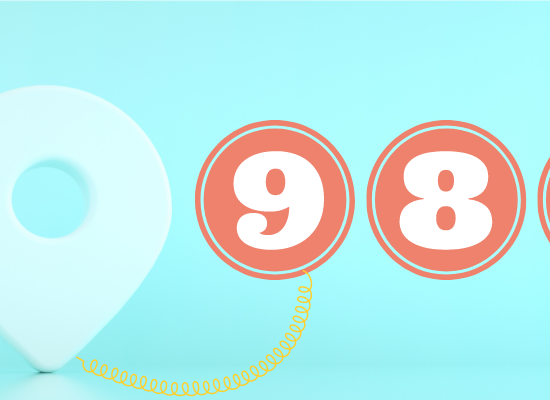
Stephanie Hepburn is a writer in New Orleans. She is the editor in chief of #CrisisTalk. You can reach her at .
In February 2020, Utah’s state epidemiologist Dr. Angela Dunn went to a legislative caucus to discuss a potential public health concern. “She came to tell us about something called Covid,” says Utah State Rep. Steve Eliason. “We were chatting before the caucus started, and I said, ‘You know, whatever happens with this virus, at least it’s getting people talking about public health.’”
He points out that the conversation around Covid has been a gateway for Utahns to discuss suicide prevention and mental health. The pandemic also increased awareness among policymakers in the state and nationally—not only about the virus itself but also the implications for mental wellbeing. “We typically just think of public health as vaccines, but mental health is the epitome of public health.”
Eliason has spent much of his 11-year tenure thinking about mental health parity and system gaps. The steps he and his legislative colleague Utah State Sen. Daniel Thatcher have taken over the past decade led to 988, the nationwide three-digit number for mental health, substance use, and suicide crises that goes live on July 16.
Nine years ago, he and Thatcher began brainstorming how they could develop a three-digit suicide prevention number in Utah that would directly connect callers to the National Suicide Prevention Lifeline.
Eliason reached out to the Federal Communications Commission and telecom lobbyists on N11 numbers, abbreviated three-digit dialing codes that end in “1-1” and can start with any number other than 0 or 1. “I was trying to figure out how we could do this from a technological perspective,” he says. Three FCC attorneys shared with him the numbers on reserve until the FCC and Congress identified a national purpose for them. They also said an N11 would be the best bet for a national effort.
A telecom lobbyist told Eliason that an N11 for just Utah would be problematic. “There is no area code for an N11,” he says, “so it wouldn’t work in just one state.” “He said that even if we secured one, there wouldn’t be a way to route it properly.” (With 988, telecom carriers had to transition numbers with a 988 prefix—in area codes that allowed 7-digit dialing—to 10-digit dialing. There were 36 states with 82 area codes that allowed 7-digit dialing and had numbers with a 988 prefix.) However, the telecom lobbyist told Eliason an N11 for mental health crises was an excellent idea and could work nationally.
Like many people, some of the lobbyists he worked with had a family member who struggled with mental health challenges. “People will tell me their story or that of their son, daughter, father..,” says Eliason. Because of his legislative efforts to improve mental healthcare, constituents often see him as a safe space for these discussions.
In 2013, as Eliason and Thatcher were putting together a bill to streamline the 20-plus different crisis lines in Utah (some went to voicemail; others went to phone trees or police dispatch), they were also concurrently thinking about how a three-digit number could work nationally. “Growing up, when there was a difficult problem, my father would sarcastically say, ‘That’s going to take an act of Congress,’” laughs Eliason, “and that’s exactly what had to happen.”
He notes that taking the concept to the federal level was daunting. “Even if you’re not in gridlock, it’s a highly partisan environment.” So the Utah lawmakers reached out to Utah U.S. Sen. Orrin G. Hatch and Rep. Chris Stewart. Taking what Eliason and Thatcher shared, they introduced a bill to improve the national suicide prevention hotline in 2017, with the goal of designating a three-digit number as the “911” for mental health and suicide crises. Congress passed the National Suicide Prevention Hotline Improvement Act the following year.
In 2017, Eliason and Thatcher introduced a resolution for a national crisis hotline locally:
“This concurrent resolution recognizes that suicide is a public health crisis and encourages the United States Congress to designate a nationwide N-1-1 mental health crisis number to assist with mental health crisis intervention services.”
The committee vote was unanimous. “There was a strong show of support in the House,” says Eliason, “but there wasn’t time to get a hearing in the Senate.”
In Utah, the legislators have continued to pass bills that help the state build out its mental health crisis continuum and supports. However, the bill they introduced in 2014—to establish 311 as Utah’s statewide mental health crisis line number—looked far different by the time it passed. Instead of creating a three-digit number, the legislation established a school safety tip line commission within the attorney general’s office, developing the groundwork for the SafeUT program, a live crisis chat and tip line for Utah students, caretakers, and educators.
“The efforts appear to be working,” says Eliason. “Over the past three years, per the CDC, Utah’s overall suicide rate has been dropping, and our youth suicide rate has fallen by double digits over the past four years.” Huntsman Mental Health Institute, the 988-Lifeline accredited call center in the state, answers the chats.
Eliason and Thatcher continued to push for a centralized call center with each bill. In 2018, they sponsored a mental health crisis line amendments bill, calling for a statewide mental health crisis line, including an N11 and texting short code. It passed.
In March 2021, the state’s legislature passed its 988 Mental Health Crisis Assistance bill. The law established a statewide behavioral health crisis response account with funds from private donations and the legislature, which appropriated $15.9 million to the fund. However, Eliason acknowledges states are in different financial positions. That’s why, in working with Rep. Chris Stewart on the language of the second iteration of the National Suicide Prevention Hotline Improvement Act, he pushed for it to include an alternative funding mechanism.
“Budget-wise, Utah is in good shape, but that varies by state,” he says. “For this to be effective nationally, the act had to include a funding mechanism other than state general funds, which are often way over tapped.”
The National Suicide Hotline Designation Act of 2020 allows states to implement a telecom customer services fee to help pay for 988-related services. According to the act, this fee can cover costs for an efficient and effective 988 call routing to an appropriate crisis center, personnel, and providing acute mental health, crisis outreach, and stabilization services.
As states implement 988, Eliason highlights legislators must examine what their constituents experience during a crisis. “If you’re sending people in ambulances to the emergency room, that’s the most expensive and least effective solution.” Instead, he suggests legislators work with their state Medicaid agency to redesign their crisis system and ensure constituents have a place to call, someone to respond, and a place to go. “That provides a crisis continuum where people get a better clinical response at a much lower cost. I don’t care what party you affiliate with—that should resonate with you.”
Eliason notes that redesigning and expanding a state’s mental health crisis system can’t be a one-and-done approach. That’s why he frequently turns to what he calls the “trifecta” of Lifeline data: in-state answer rate, call volume, and hold time. He suggests states examine these numbers before and after the launch of 988. “When 988 goes live, there will be national stories, and people will hear about it,” he says. “Whether states are ready for it, volume is very likely to go up, potentially way up!”
Like other states, Utah’s in-state answer rate is publicly accessible on the Lifeline’s website. The most recent numbers are from January to March 2022. According to the report, Utah’s answer rate for those three months was nearly 80%. However, 41% of U.S. states and territories had an in-state answer rate of 69% or less. “It’s a critical metric to determine whether we are doing this with fidelity,” he says.
According to Utah’s 2020 Lifeline annual report, since 2016, call volume has increased by 125%. “We have one of the highest state utilization rates,” notes Eliason. He says the rate helps legislators know whether the state is sufficiently promoting the Lifeline. “An answer rate on its own without considering utilization doesn’t give legislators the full picture,” he says. “If you have an answer rate of 100% but are only getting 20 calls, you know there’s a problem.”
Eliason points out that marketing, like Live On Utah, a statewide suicide prevention effort, has been vital in ensuring people in crisis connect to the Lifeline. That includes PSAs like that done by Steve Young, a hall of fame NFL quarterback from Utah. In the PSA, Young—who’s publicly shared his mental health challenges—points out that men are “… told to suck it up a lot more than we’re asked to talk it out.” The video directs people to the Lifeline phone number. Soon the number that pops up on the screen will be 988.
When states and communities are ready to promote 988, Eliason points out they need to follow the rule of seven. It takes seven “touches” for a person to remember a marketing message. “Just like redesigning the crisis system,” he says, “marketing 988 must be a constant drumbeat for people to remember to call, or text, 988 if they or a loved one are experiencing a mental health, suicide, or substance use crisis.”









